Pro Forged Steel vs Cast Iron Crankshaft Manufacturer
Introduction to Industrial Crankshafts: The Heart of the Engine
At the core of nearly every reciprocating internal combustion engine lies a critical component: the crankshaft. Often referred to as the "heart" or "backbone" of the engine, this intricate mechanical part is responsible for one of the most fundamental tasks in power generation. It masterfully converts the linear, up-and-down motion of the pistons into the rotational force, or torque, that ultimately drives a vehicle's wheels, a generator's rotor, or a pump's impeller. The relentless stress, immense forces, and high-speed rotation it endures mean that its design, material, and manufacturing process are paramount to an engine's performance, reliability, and overall lifespan.
The choice of material is perhaps the most significant decision in crankshaft design. For decades, the primary contenders for this demanding role have been cast iron and forged steel. Each material brings a unique set of properties, born from its distinct manufacturing process, that makes it suitable for different applications. The decision is not as simple as one being universally "better" than the other; rather, it's a complex engineering trade-off involving strength, durability, weight, vibration damping characteristics, and, crucially, cost. This article aims to serve as a comprehensive guide, demystifying the essential differences and helping you navigate the crucial decision of forged steel vs cast iron crankshaft industrial use. As a leading manufacturer with expertise in both technologies, we are positioned to provide an unbiased look at each option, ensuring you can select the perfect component for your specific needs, whether for a single custom project or a large-scale production run.
The Forging Process: Crafting Ultimate Strength and Durability
Forging is a manufacturing process with a legacy rooted in ancient blacksmithing, now refined to an exact science. The creation of a forged steel crankshaft begins with a solid billet of high-quality steel alloy. This billet is heated to a precise, malleable temperature—typically over 1,200°C (2,200°F)—where it becomes plastic but not molten. This glowing-hot steel is then subjected to immense pressure, being pressed, hammered, or squeezed into the desired shape using a series of dies. This process is not merely about shaping the metal; it fundamentally transforms its internal structure.
The key advantage of forging lies in the grain flow of the metal. Unlike in a cast part where the metal's grain structure is random and non-directional, the forging process forces the steel's internal grains to align with the shape of the part. This continuous, unbroken grain flow follows the contours of the crankshaft's journals, webs, and counterweights, creating a component of exceptional strength and fatigue resistance. This internal structure eliminates the microscopic voids and porosity that can sometimes be present in castings, which can act as stress risers and potential failure points.
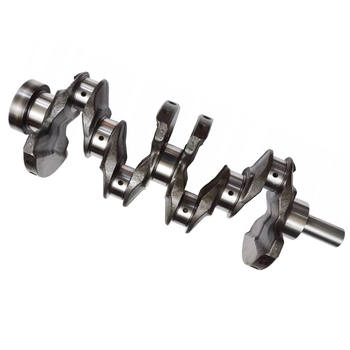
Key Advantages of Forged Steel Crankshafts:
- Superior Tensile Strength: Forged steel possesses a significantly higher tensile strength than cast iron. This means it can withstand greater pulling and stretching forces before deforming or breaking, a critical attribute in high-output engines where combustion pressures are extreme.
- Exceptional Fatigue Resistance: The aligned grain structure makes forged steel highly resistant to metal fatigue—the weakening of a material caused by repeated cycles of loading and unloading. A crankshaft undergoes billions of such cycles in its lifetime, and forged steel's ability to resist the initiation and propagation of fatigue cracks is its most significant advantage in performance applications.
- Enhanced Ductility and Impact Strength: Ductility is a material's ability to deform under tensile stress without fracturing. Forged steel is more ductile than cast iron, meaning it is more likely to bend before it breaks. This provides a margin of safety against catastrophic failure, especially under sudden shock loads, such as those caused by detonation or pre-ignition in an engine.
- Structural Integrity: The forging process produces a dense, non-porous material. This inherent structural integrity ensures maximum reliability under the most demanding operating conditions, making it the default choice for applications where failure is not an option.
Considerations for Forged Steel:
The primary trade-off for this superior performance is cost. The forging process is more energy-intensive, requires more expensive tooling (dies), and often involves more extensive post-forging machining to achieve final dimensions. This results in a higher per-unit cost compared to its cast iron counterpart, making it an investment reserved for applications that truly demand its level of strength and durability.
The Casting Process: A Symphony of Efficiency and Versatility
Casting offers a starkly different yet highly effective approach to crankshaft manufacturing. Instead of shaping solid metal, casting involves heating the material—typically a specific grade of iron, such as ductile or nodular iron—until it becomes fully molten. This liquid metal is then poured into a precisely crafted mold that contains the negative impression of the desired crankshaft shape. Once the metal cools and solidifies, the mold is removed, revealing a near-net-shape crankshaft.
The internal structure of a cast part is isotropic, meaning its properties are the same in all directions. The grain structure is granular and random, formed as the metal crystals grow during the cooling process. While this doesn't provide the directional strength of a forged component, modern casting techniques, particularly with ductile iron, have made significant strides. Ductile iron contains small, spherical graphite nodules within its matrix, which inhibit the formation of cracks and give it higher strength and ductility than older grey cast iron, making it a viable material for a wide range of engine applications.
Key Advantages of Cast Iron Crankshafts:
- Cost-Effectiveness: Casting is generally a less expensive manufacturing process. It requires less energy, and the molds (often made of sand) can be cheaper and faster to produce than the hardened steel dies used in forging. This makes it the ideal choice for high-volume production of standard engines where cost control is a primary objective.
- Design Flexibility: Because the metal is poured as a liquid, casting allows for the creation of more complex and intricate shapes. Features like hollow journals or uniquely shaped counterweights, which can help reduce weight and improve balancing, can be integrated directly into the casting, minimizing the need for subsequent machining.
- Excellent Vibration Damping: One of the standout properties of cast iron, particularly due to its graphite content, is its ability to absorb and dampen vibrations. This results in a smoother, quieter running engine, a highly desirable trait in passenger vehicles and certain industrial machinery.
- Good Wear Resistance: The graphite in the iron matrix also contributes to good lubricity and wear resistance on the journal bearing surfaces, contributing to a long service life under normal operating conditions.
Considerations for Cast Iron:
The main limitation of cast iron is its lower tensile strength and ductility compared to forged steel. It is more brittle, and under extreme stress or shock loads beyond its design limits, it is more prone to fracture. This makes it less suitable for engines that are turbocharged, supercharged, or operate at very high RPMs, where the internal forces are magnified significantly.
Application-Specific Showdown: Forged Steel vs Cast Iron Crankshaft Industrial Use
Understanding the manufacturing processes and material properties is essential, but the ultimate decision comes down to the specific application. The debate over forged steel vs cast iron crankshaft industrial use is best resolved by matching the material's strengths to the engine's demands. As a supplier of both, we help our clients make the most appropriate and cost-effective choice.
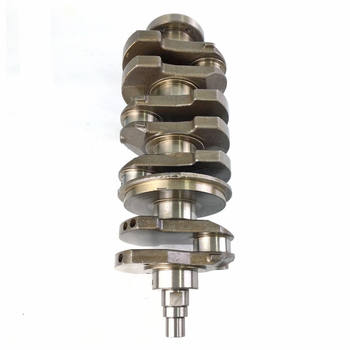
When to Specify a Forged Steel Crankshaft:
Forged steel is the undisputed champion of high-stress environments. Its selection is non-negotiable in applications where maximum power, torque, and reliability are the primary design goals.
- Heavy-Duty Diesel Engines: The massive combustion pressures and high torque output of large diesel engines found in semi-trucks, construction equipment, and marine vessels necessitate the strength of forged steel.
- High-Performance Motorsport: From drag racing to endurance racing, engines are pushed to their absolute limits. The high RPMs and extreme cylinder pressures demand a crankshaft that can resist fatigue and catastrophic failure.
- Industrial Power Generation: For large generators that run continuously for thousands of hours, often under heavy load, the long-term durability and fatigue resistance of forged steel ensure reliability and prevent costly downtime.
- Forced Induction Applications: Engines equipped with turbochargers or superchargers generate significantly higher internal forces. Forged steel is essential to handle the increased stress placed on the rotating assembly.
When a Cast Iron Crankshaft is the Smart Choice:
Cast iron, particularly modern ductile iron, is an excellent and highly reliable material for a vast array of mainstream applications where operating conditions are less extreme and cost is a significant factor.
- Standard Passenger Vehicles: The majority of naturally aspirated gasoline engines in everyday cars and light trucks use cast iron crankshafts. They provide a perfect balance of adequate strength, excellent vibration damping for a smooth ride, and low manufacturing cost.
- Light-Duty Industrial Engines: Many smaller industrial engines, such as those used in water pumps, agricultural equipment (e.g., tractors), and small-to-medium generators, operate at lower RPMs and under predictable loads, making a well-designed cast iron crankshaft a perfectly suitable and economical solution.
- Cost-Sensitive OEM Production: For original equipment manufacturers (OEMs) producing engines in high volumes, the cost savings offered by casting are a critical factor in remaining competitive.
Ultimately, the analysis of forged steel vs cast iron crankshaft industrial use reveals a clear picture: the choice is dictated by the application's specific power density, operational stress, and budget. Forged steel is for ultimate strength and performance; cast iron is for balanced performance and economic efficiency.
Our Manufacturing Excellence and Quality Assurance
As a premier manufacturer, our expertise is not limited to a single process. We have invested heavily in state-of-the-art facilities for both forging and casting, allowing us to offer our clients the ideal solution without bias. Our commitment to quality is embedded in every step of our production, from raw material sourcing to final inspection.
Our quality control protocol is rigorous and multi-faceted:
- Raw Material Verification: Every batch of steel or iron is subjected to spectrometric analysis to confirm its chemical composition and purity meet our exacting standards.
- In-Process Monitoring: During manufacturing, we employ continuous dimensional checks using CMM (Coordinate Measuring Machine) technology. For forged components, we utilize magnaflux or ultrasonic testing to detect any potential subsurface imperfections, ensuring 100% structural integrity.
- Final Inspection and Finishing: Every single crankshaft undergoes a comprehensive final inspection. This includes dynamic balancing to eliminate vibrations, profilometer checks for perfect journal surface finish to ensure optimal bearing life, and Rockwell hardness testing to verify proper heat treatment.
Our operations are certified under ISO 9001, a testament to our systematic approach to quality management. We can produce crankshafts that meet or exceed OEM specifications, and our engineering team is adept at working with clients to develop fully custom designs tailored to unique performance goals.
Partnering With Us: Sourcing Your Ideal Crankshaft
We pride ourselves on being a flexible and customer-centric supplier, catering to a diverse clientele with varying needs. Our business model is designed to support everyone from a large-scale industrial buyer to an individual enthusiast building a custom engine.
For our B2B and Wholesale Partners: We offer comprehensive support for bulk orders, including preferential pricing, dedicated project management, and long-term supply agreements to ensure supply chain stability. Our engineers can collaborate directly with your design team to optimize components for performance and manufacturability, providing a true partnership experience.
For our B2C and Individual Customers: We firmly believe that top-tier quality should be accessible to all. We welcome single-unit orders for custom builds, engine replacements, or performance upgrades. Whether you need a robust forged steel crankshaft for a race car or a reliable cast iron replacement for an industrial pump, we provide the same level of quality and attention to detail.
We offer flexible Minimum Order Quantities (MOQs) and extensive customization options. You can specify the material (various steel alloys or iron grades), counterweight profiles, journal and pin diameters, and even specialized surface treatments. Our dedicated customer service team is here to guide you through the selection process and provide robust after-sales support. When you choose to partner with us, you are choosing a manufacturer committed to delivering not just a component, but a solution engineered for excellence.
For more detailed information, please visit our official website:forged steel crankshaft
About the author: Dr. Alistair Finch is a materials engineer with over 25 years of experience in metallurgical science and powertrain component manufacturing. Specializing in the failure analysis and performance optimization of high-stress engine parts, he has led research and development teams in both the casting and forging industries. His work focuses on enhancing the durability and efficiency of industrial and automotive crankshafts, making him a leading voice in material selection and advanced manufacturing processes. ---
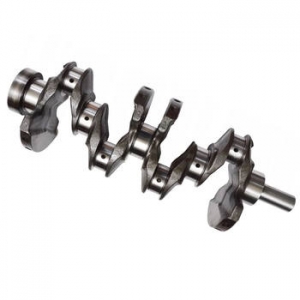 Pro Forged Steel vs Cast Iron
Pro Forged Steel vs Cast Iron
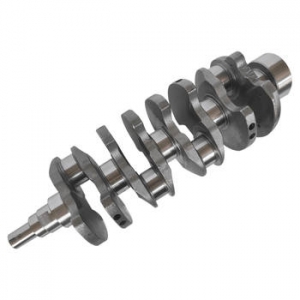 Expert Crankshaft Material Sel
Expert Crankshaft Material Sel
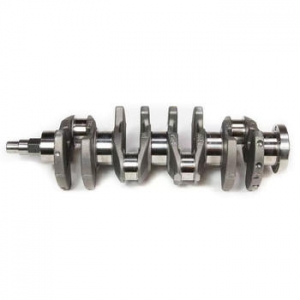 Trusted OEM Equivalent Cranksh
Trusted OEM Equivalent Cranksh
 Causes of Crankshaft Failure M
Causes of Crankshaft Failure M
